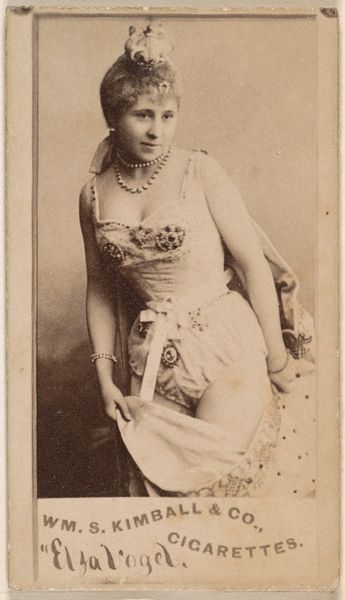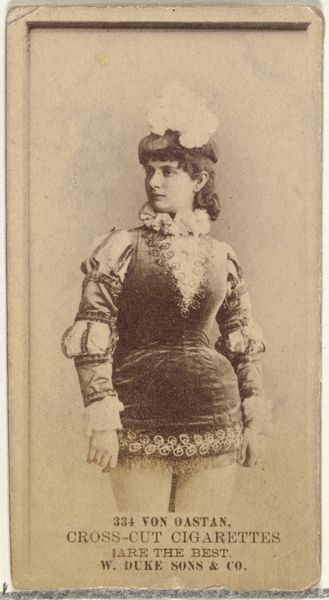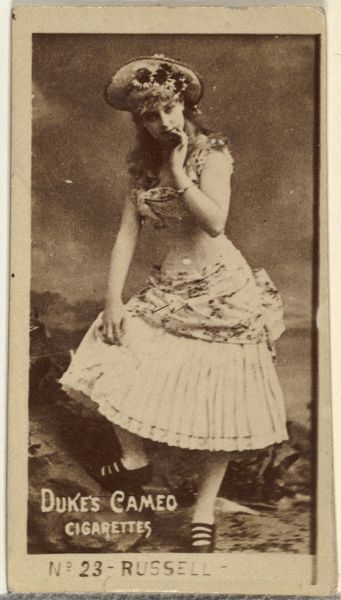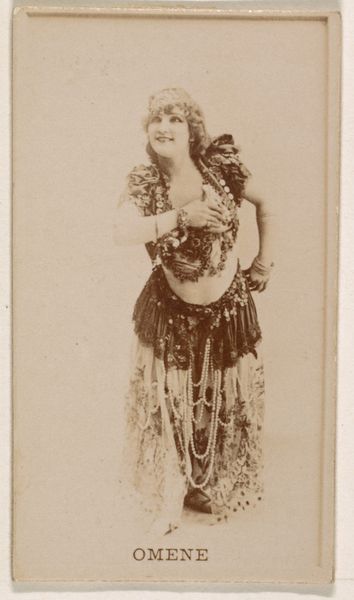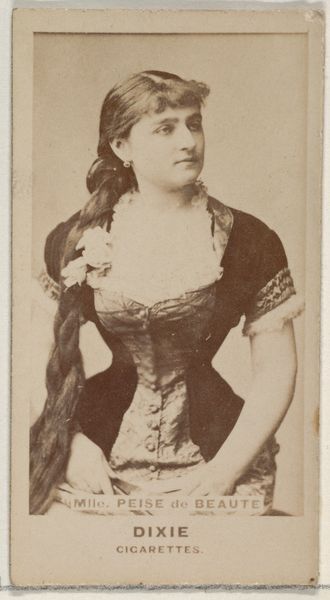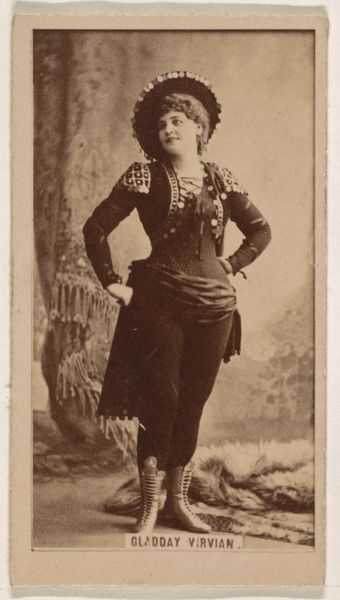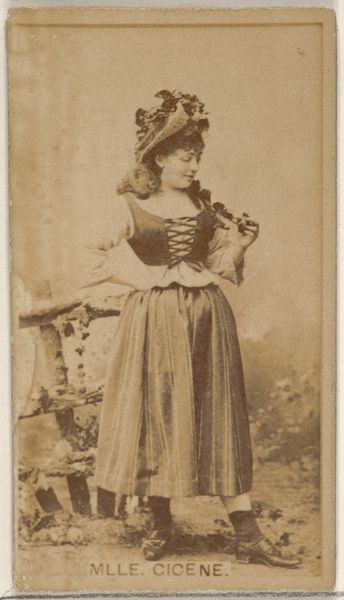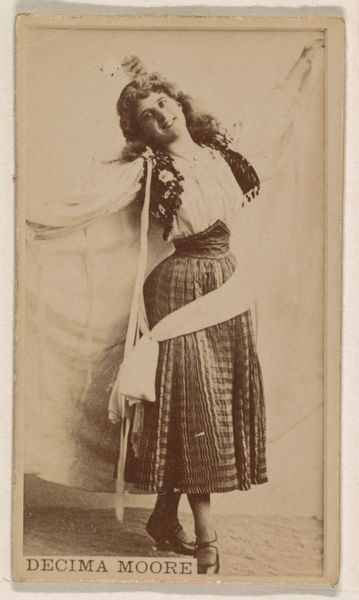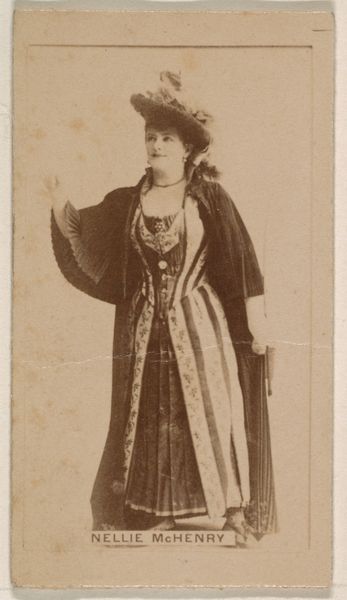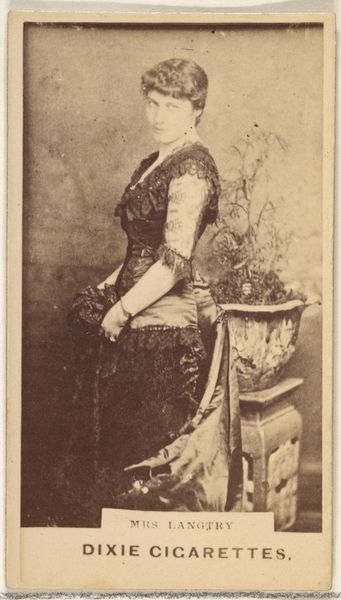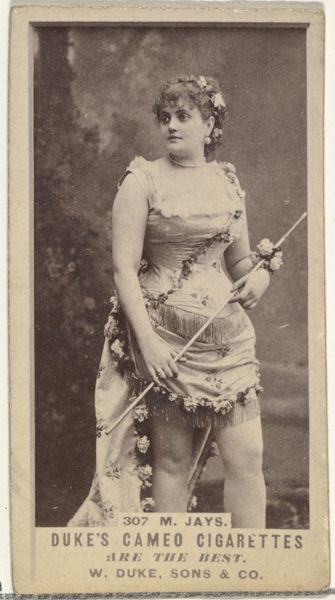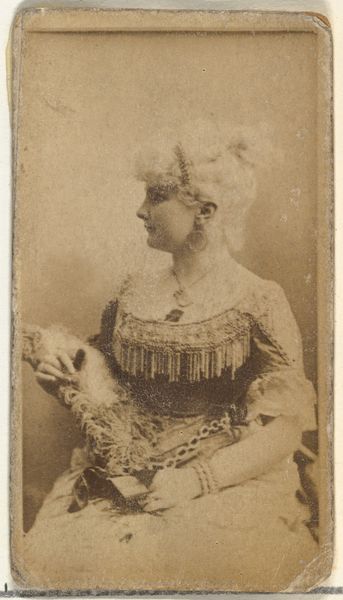
Mlle. Carmen, Paris, from the Actors and Actresses series (N45, Type 1) for Virginia Brights Cigarettes 1885 - 1891
0:00
0:00
drawing, print, photography
#
portrait
#
drawing
# print
#
figuration
#
photography
#
genre-painting
Dimensions: Sheet: 2 3/4 x 1 3/8 in. (7 x 3.5 cm)
Copyright: Public Domain
Curator: I find myself drawn to the pose of the figure. It exudes such confidence, almost a dare, doesn't it? Editor: Indeed! We're looking at "Mlle. Carmen, Paris," a photograph dating from between 1885 and 1891, part of a series of actors and actresses that was included in Virginia Brights Cigarettes. The Allen & Ginter company was one of the first to include trade cards like this. Think about how that shifted artistic production itself, creating an avenue for patronage of the arts, no matter how indirectly, through everyday consumer goods. Curator: Absolutely. It also creates a form of visual currency. These cards functioned as collectible objects within a broader system of advertising. We're not simply talking about representation; we are talking about constructing fame and commodifying the performing arts. Consider the photographic print—mass produced, available in sets. What are the material consequences of creating so many images in the hands of so many consumers? Editor: Good point. Look closer, though. Consider what’s implied in terms of class and labor here. The subject's garments have the feel of a theatrical costume—exotic and constructed, likely mass-produced and embellished. Who crafted this garment? Under what conditions were the fabrics sourced, and what roles were these performers inhabiting for largely white, Western audiences? Curator: Precisely. These are commercial products operating under highly specific economic parameters, distributed, and consumed within precise capitalist channels. The focus on celebrity culture distracts us from acknowledging these factors in a way. We buy into the fiction. Editor: The very distribution method reinforces a hierarchy. The consumption of cigarettes and the image become linked, framing Mlle. Carmen in the service of a larger commercial enterprise with potentially exploitative practices in different corners of the world. It reflects the way the late 19th century idealized certain images of femininity—often performative and removed from daily life—but obscures the labour that upholds these industries and aesthetic forms. Curator: So, ultimately, it's a confluence of commerce, representation, and manufacturing, packaged in this small, rectangular object. The implications, when you start to unwrap them, are enormous. Editor: Absolutely. And recognizing the context enriches our understanding, allowing for nuanced interpretation, even through such a seemingly simple photograph.
Comments
No comments
Be the first to comment and join the conversation on the ultimate creative platform.
